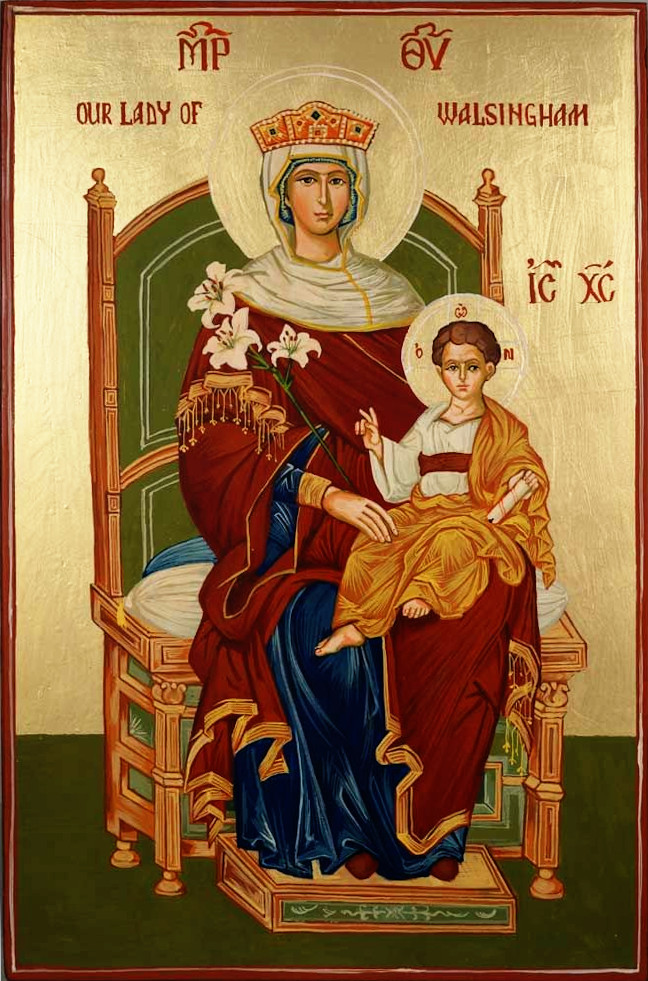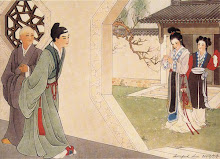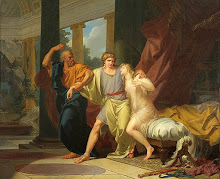Cross posted from Solidarity Hall:
Of all the artistic and literary schools of European history, perhaps that of Romanticism draws the strongest emotions. And with good reason, since Romantic authors and artists tended to place a high value upon strong emotions and what gave rise to them. Not only divisive, it has also been a very divided school, torn between the desire to liberate the individual person from her social and religious strictures and the sensitivity to the deep draw that society and religion had upon a person’s loyalties and psychology in the first place.
You find poets as diverse as Blake on the one hand, championing free love, the abolition of church hierarchies and something close to religious anarchism, while Coleridge highlights themes of sin and redemption, and advocated a return to traditional apostolic Christendom. Yet both authors were considered exemplars of the selfsame artistic movement. Similarly, Chateaubriand, the arch-conservative, monarchist and Jesuit-educated French Catholic apologist, served as perhaps the primary inspiration for no less liberal, republican and agnostic an author than Victor Hugo.
Thus it should not come as any surprise that Romanticism can both attract and repel people to extreme degrees – both certainly were the case for me when I was reading through the European literary canon in high school. My wife loves Wuthering Heights, and my in-laws love Jane Eyre, yet for my own part I have always been of two minds or more about the Brontë sisters, and make no secret of my preference for the subtler novels of Jane Austen. But there is a branch of Romantic art for which I have come to a renewed appreciation and affection through teaching it to my Chinese students – the latter-day English Romantics of the Pre-Raphaelite Brotherhood.
The Pre-Raphaelite Brotherhood, of whom three painters – William Holman Hunt, Dante Gabriel Rossetti and John Everett Millais – formed the core, originally displayed their works anonymously, signed only with the initials ‘P. R. B.’ Their paintings were immediately and deeply controversial upon their display. They rejected the standard artistic conventions of the time – the unnatural poses, the exaggerated expressions and the overwrought conventional (the Pre-Raphaelites would say ‘sloshy’) compositions typical of the ‘grand style’ which was then ascendant under Sir Joshua Reynolds of the Royal Academy of Arts. All of this grated on them. They traced these tendencies back to the late Renaissance, particularly the work of Raffaello Sanzio and Michelangelo di Buonarotti, and thus deliberately turned to earlier sources of inspiration.
To recall mediaeval painting conventions and media, the Brotherhood adopted a more colourful palette, with emphasis on strong, brilliant primary colours, applied in thin layers on whitewash. They insisted on more natural and easy displays of the human figure, often with the facial expressions they painted being less exaggerated (and yet still somehow more poignant and evocative) than their contemporaries. Perhaps reflecting the nascent Realist tendencies of their day, they wanted to display workaday objects and things of nature as they truly were, in full detail, where often in other contemporary paintings these were blurred or shaded to draw more attention to the main subject.
Reflecting their deep inspiration from Romanticism, they turned away from secular and contemporary themes, and back toward Biblical ones, toward Germanic or Celtic mythology, toward Shakespearean drama. As the movement progressed, they developed a style of magical realism by applying symbolic and mythic value to the mundane objects they portrayed.
But most scandalously to the sensibilities of the time, the Brotherhood painted figures as sacred as the Holy Family as ordinary working-class people (as in Millais’s painting Christ in the House of His Parents and Hunt’s painting The Finding of the Saviour in the Temple), drawing the ire and umbrage even (surprisingly!) of Mr Charles Dickens.
Their insistence on such a portrayal was not, as Dickens claimed, committing any sort of sacrilege or blasphemy against Our Lord and his parents. Dickens himself, as a man famous for his Realism in fiction and for portraying poor people in his novels in an almost saintly manner, ought to have understood better than any other man that Millais’s portrayal was meant to establish and confirm the fully-human nature of Jesus, and to portray that humanity as closest in incarnate kinship to those whom He served: the carpenters, the fishermen, the starving multitudes, the orphans, the widows.
Indeed, Millais had been inspired to paint Christ in the House of His Parents by a high-church Tractarian vicar’s homily. He wanted to portray a Jesus who was sincere enough in his love for humanity to share fully in humanity’s incarnate life, pain and labour, yet whose divine crucifixion and resurrection are foreshadowed by the blood from the nail wound on the young Christ’s palm, which has dripped onto his feet. It is odd indeed that Dickens would describe Millais’s Christ as ‘hideous’, ‘wry-necked’ and ‘blubbering’.
But it is not at all odd that the greatest and most influential supporter of the Pre-Raphaelite Brotherhood was the polymath, art critic, heterodox Victorian economist and ‘violent Tory of the old school’ John Ruskin. The school was informed by Ruskin’s critiques, in particular his advice that painting be ‘from nature only’ and that any higher meaning, iconography or symbolism in a painting should rest upon the brute facts therein portrayed, rather than being imposed artificially on it by the artist.
Thus Pre-Raphaelitism, under Ruskin’s guidance particularly of William Holman Hunt, managed to incorporate elements of Realism as well as leaving open an incredibly great space for Romantic and mediaeval principles to play. Ruskin’s varied interests were often shared by the members of the artistic circle. For example, he, Dante Rossetti and Pre-Raphaelite-associated artist Lowes Cato Dickinson all taught art at and supported the Working Men’s College – a project of the Christian socialists Frederick Denison Maurice and Frederick James Furnivall, who wanted to foster liberal and artistic education in the working class – in its infancy. (Ruskin himself would later go on to author a veritable heterodox broadside against classical political economy, Unto This Last, which would go on to influence the anti-imperialist author John Atkinson Hobson as well as Gilbert Chesterton and Mohandas Gandhi.)
Ruskin’s protégé, the designer, author and committed anarcho-socialist William Morris (whose ‘prose romances’ pioneered the high-fantasy novel, thus directly influencing Tolkien, Lewis and the Inklings), was also heavily involved with the Pre-Raphaelite Brotherhood. Morris drew great inspiration from the Pre-Raphaelite painters as well as from Romantic poets like Alfred, Lord Tennyson, Arthurian legend (Malory especially) and heathen Germanic mythology (particularly the Poetic Edda and the Volsunga Saga). Taking inspiration from Ruskin’s artistic philosophy, he came to his own theories of the alienation of labour independently of Marx. Indeed, he wanted to return craft work and artisanship to the status of art – in his mind, labour and art informed each other and belonged together, and had been artificially severed from each other along with the noble status of the lower-middle-class craftsman by automation and industrial mass production; ‘practicality’ and beauty were not opposed but reconciled through human efforts.
The Pre-Raphaelites were a small group of like-minded artists whose ideas of a confluence of Realist, Romantic and mediaevalist styles sadly did not survive in any meaningful form the turn in the world of Western art toward out-and-out Realism (and then Impressionism, Surrealism, Dadaism and Modernism). The lives of the Pre-Raphaelite artists and associates also make for incredibly tragic reading – for example, the affair between Ruskin, Effie Gray and John Millais which led to Gray’s divorce from Ruskin and Millais’s leaving the Pre-Raphaelite circle; or the unhappy marriage of William and Jane Morris and the latter’s involvement with Dante Rossetti.
Thankfully, the Pre-Raphaelite Brotherhood’s influence was felt well beyond the art world. Their artworks – eschewing the ‘grand style’ and insisting instead on drawing attention to the stuff of everyday, and in the process making it again sacred – were inspired by, and in turn inspired, many of the prophets of solidarity whose stories we retell here: John Ruskin and William Morris; through Ruskin, Chesterton and Gandhi; and through Morris, Tolkien, Lewis, Sayers and Grant. It is a wellspring we would do well to tap.














There are interesting allusions to other works of art in Millais’ “Christ in the House of his Parents”. Has this been discussed somewhere already?
ReplyDelete